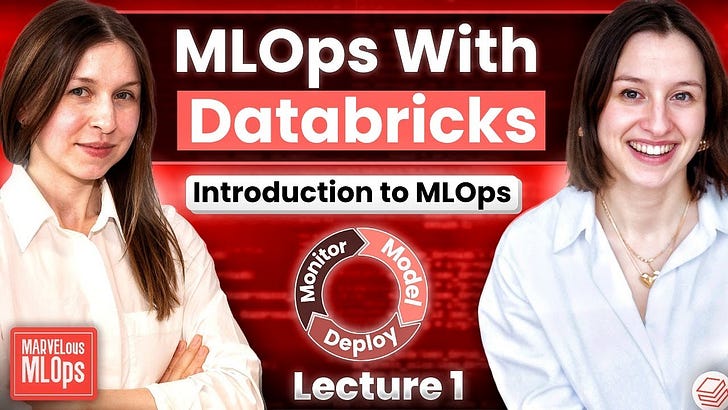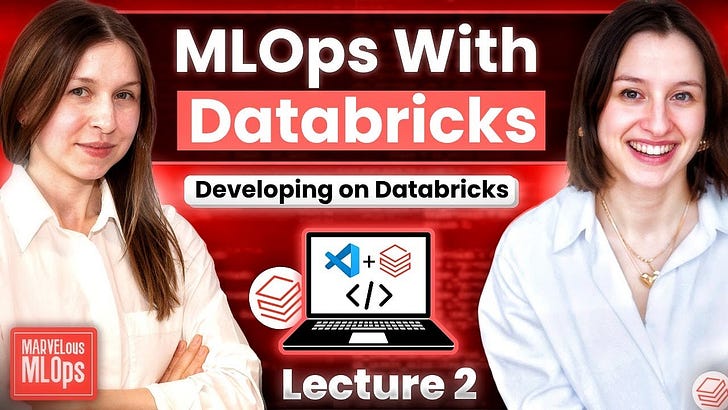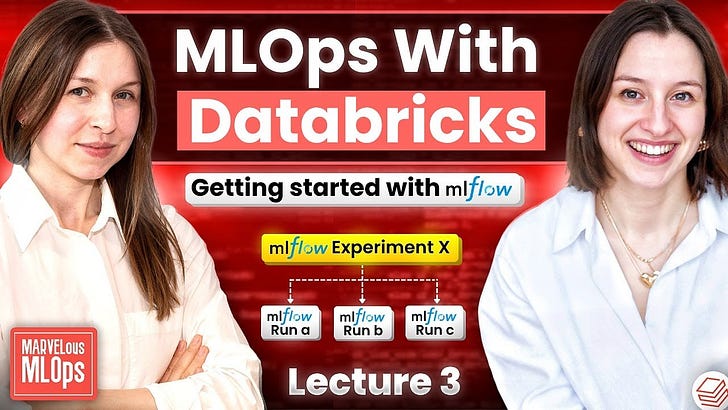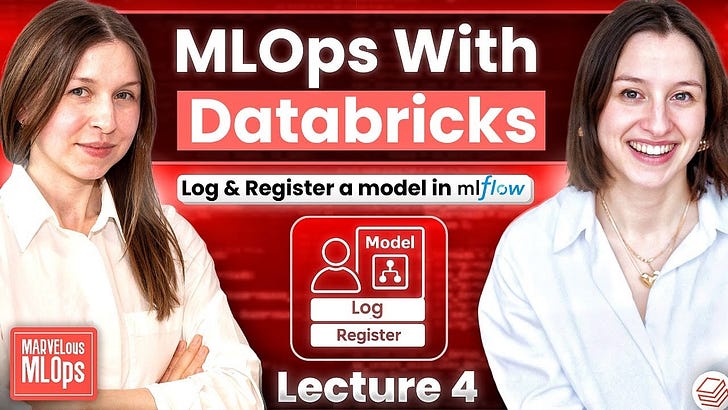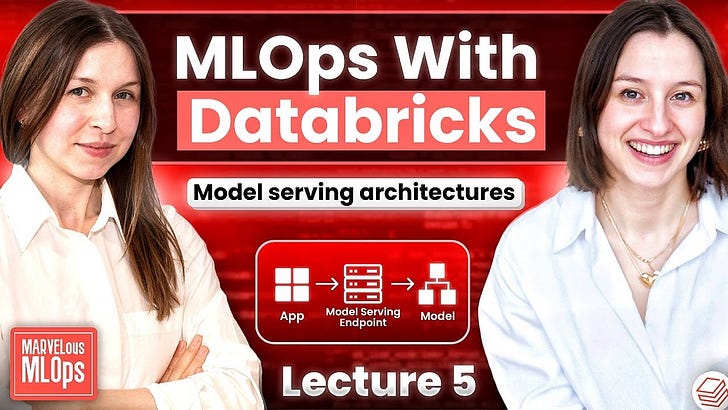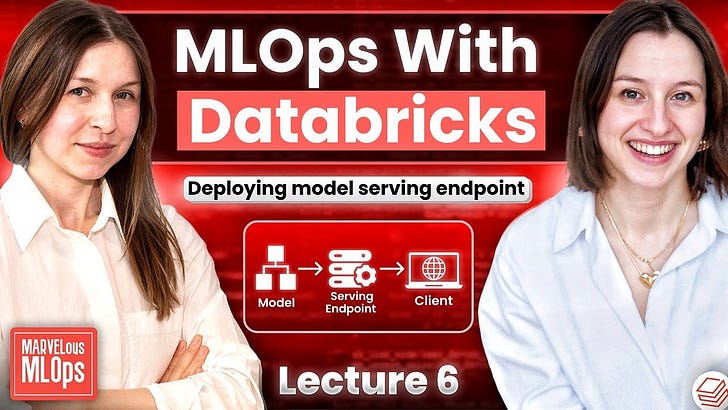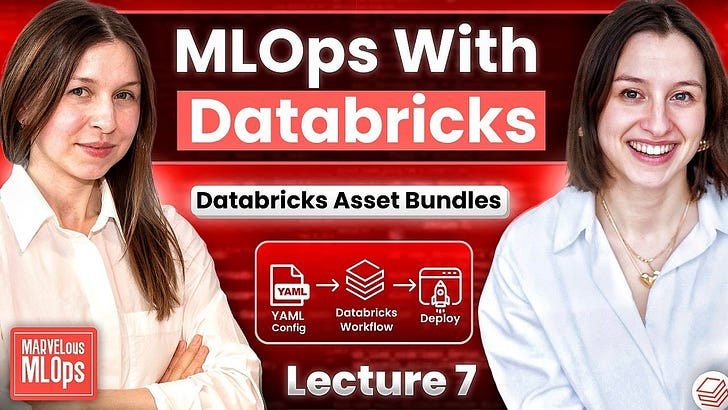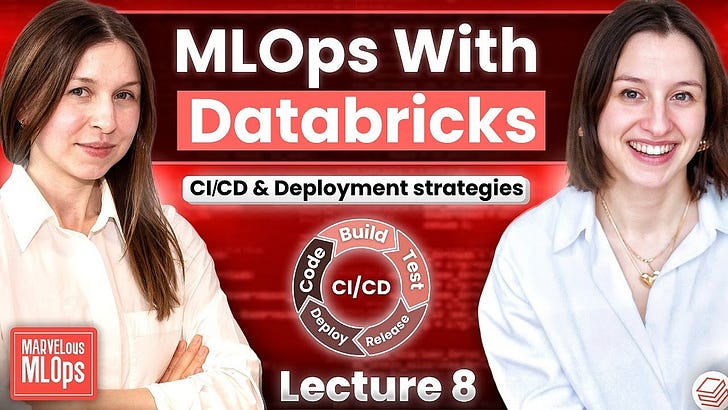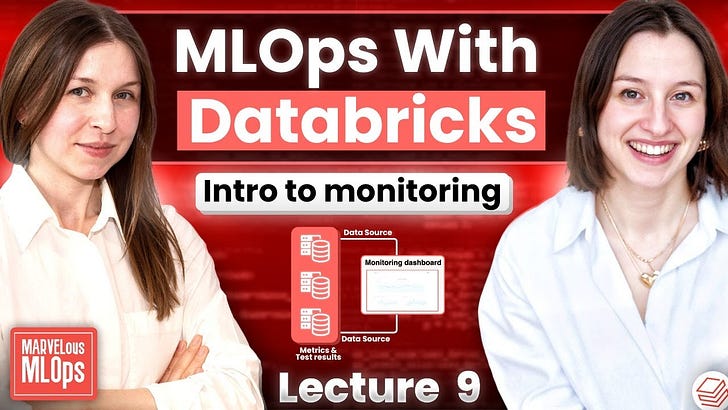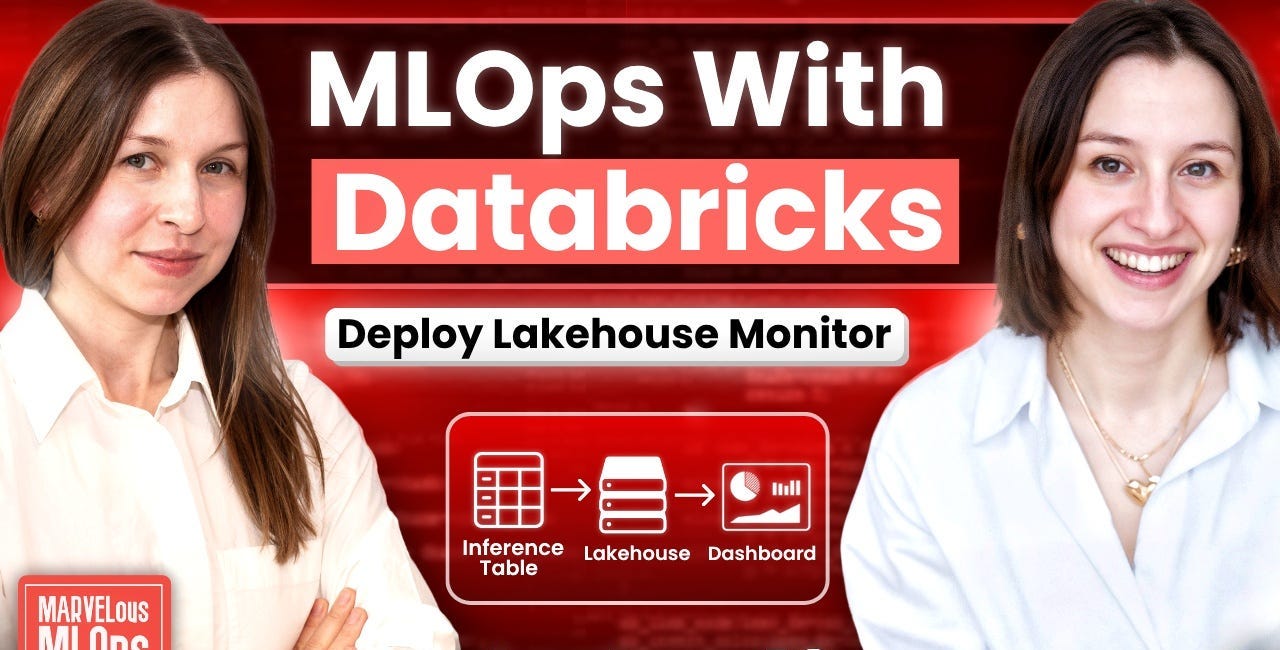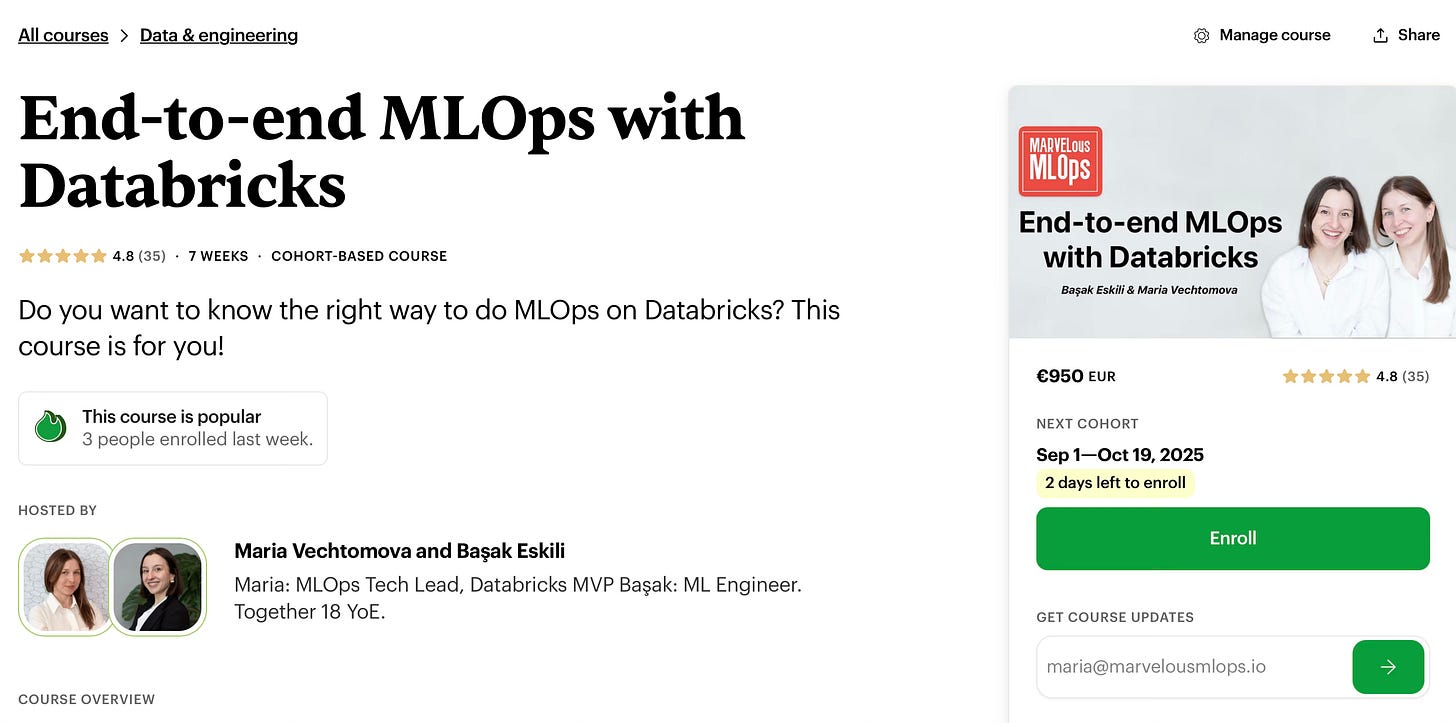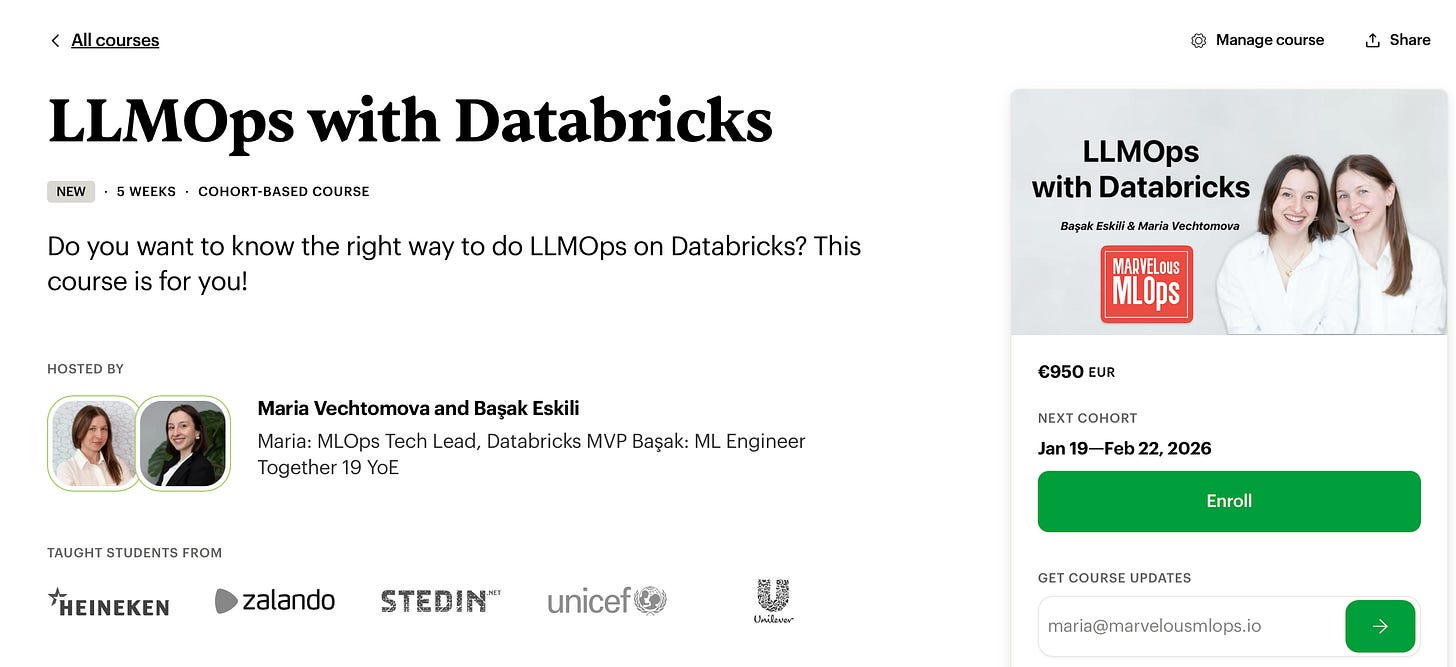If you’ve ever built a machine learning model in a Jupyter notebook and wondered “Now what?”, you’re not alone. The gap between a working prototype and a production ML system is big, filled with infrastructure complexity, deployment challenges, and monitoring nightmares.
That’s why we created a free, hands-on MLOps course using Databricks Free Edition. A guide we wish we’d had when starting out with MLOps on Databricks.
With 3 hours of video lessons and 10 detailed Substack lectures, this course takes you from zero to a production-ready ML pipeline. You’ll master automated deployment with Databricks Asset Bundles and GitHub Actions, and set up monitoring with drift detection to keep your models reliable over time.
To make things more fun, we built our use case using a toy dataset around Marvel characters, after all, we’re big fans of the universe.
The 3-hour course is now available as a single video on YouTube:
The 10-lecture journey
Here’s the full collection of articles so you can explore them easily:
Lecture 1: Introduction to MLOps
We start with the hard truth: most ML projects never make it to production. Why? Because moving from a 1000-line notebook to a scalable system requires a completely different mindset.
Introduction to MLOps
Databricks recently introduced Free Edition, which opened the door for us to create a free hands-on course on MLOps with Databricks.
Lecture 2: Developing on Databricks
We show why notebooks are great for exploration but become bottlenecks for MLOps. They make it difficult to write modular code, apply code quality standards, or run unit tests. We’ll show you how to use VS Code extension, Databricks CLI, and Databricks Connect to develop locally with modern engineering workflows while running PySpark code on Databricks.
Developing on Databricks
Databricks recently introduced Free Edition, which opened the door for us to create a free hands-on course on MLOps with Databricks.
Lecture 3: Getting started with MLflow
Dive deep into the two most important MLflow classes: `mlflow.entities.Experiment` and `mlflow.entities.Run`. These form the foundation of everything else in MLflow. Learn how to set up tracking and registry URIs for Databricks, implement environment detection to distinguish local vs. Databricks environments, and handle authentication profiles for multiple developers collaborating on the same codebase.
Getting started with MLflow
Databricks recently introduced Free Edition, which opened the door for us to create a free hands-on course on MLOps with Databricks.
Lecture 4: Logging and registering models with MLflow
Learn the difference between logging a pickle file and creating a proper MLflow Model. It’s the difference between a prototype and production-ready code.
Logging and registering models with MLflow
Databricks recently introduced Free Edition, which opened the door for us to create a free hands-on course on MLOps with Databricks.
Lecture 5: Model serving architectures
Not all ML model serving is created equal. We cover:
- Batch predictions (pre-compute, store, and retrieve on demand)
- Real-time serving (compute on demand)
- Hybrid approaches (feature lookup + real-time inference)
Model serving architectures
Databricks recently introduced Free Edition, which opened the door for us to create a free hands-on course on MLOps with Databricks.
Lecture 6: Deploying a model serving endpoint
Deploy your first model endpoint with one Python command using Databricks SDK. Databricks Model Serving provides fully managed serverless model serving APIs with automatic scaling (including scale-to-zero), built-in monitoring for latency/throughput/error rates, and seamless Unity Catalog integration. Implement A/B testing with traffic splitting and model comparison strategies.
Deploying a model serving endpoint
Databricks recently introduced Free Edition, which opened the door for us to create a free hands-on course on MLOps with Databricks.
Lecture 7: Databricks Asset Bundles
DAB provides the recommended declarative, YAML-based approach for deploying resources and dependencies on Databricks. It offers a balance between Terraform’s complexity and API flexibility. Under the hood, it leverages Terraform while managing the complexity for you. We deploy a ML workflow using DABs.
Databricks Asset Bundles
Databricks recently introduced Free Edition, which opened the door for us to create a free hands-on course on MLOps with Databricks.
Lecture 8: CI/CD and deployment strategies
Build proper deployment pipelines with Unity Catalog governance. Learn the difference between workspace-level and catalog-level permissions (it matters more than you think). Create CI/CD pipelines for automated testing and deployment to multiple environment.
CI/CD & Deployment Strategies
Databricks recently introduced Free Edition, which opened the door for us to create a free hands-on course on MLOps with Databricks.
Lecture 9: Introduction to ML monitoring
Traditional monitoring isn’t enough for ML systems. Learn the difference between data drift (input distribution shifts) and concept drift (relationship between inputs and outputs changes). Understand that not all drift is bad: sometimes models remain robust despite input changes. ML monitoring requires tracking statistical properties beyond system health, errors, and latency.
Introduction to ML monitoring
Databricks recently introduced Free Edition, which opened the door for us to create a free hands-on course on MLOps with Databricks.
Lecture 10: Implementing Model Monitoring on Databricks
Implement end-to-end monitoring using Databricks Lakehouse Monitoring. Build four key components: inference logging (capturing model inputs/outputs), monitoring table creation, scheduled refreshes, and monitoring dashboards. Learn how Databricks automatically generates Profile Metrics Tables (summary stats, accuracy, confusion matrix) and Drift Metrics Tables for tracking data distribution changes over time.
Want to learn more, go deeper, and get personalized feedback? 1st of September we start the last cohort of our MLOps with Databricks course. If you considered to join, don’t miss this opportunity! Use this link to get 100 euro off.
We also opened enrollment for LLMOps with Databricks course starting in January 2026. Use this link to apply code EARLYBIRD for 20% off (valid until end of September).



